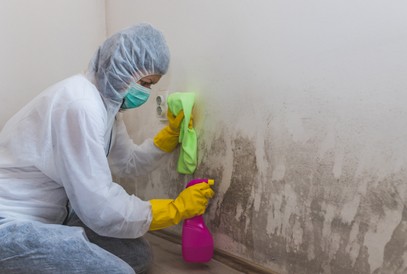Acoustic insulation or soundproofing: from design to the choice of materials
Today we are dealing with a very interesting topic:
acoustic insulation or soundproofing . Regardless of where we are, whether it is a noisy city or we are close to environments with high noise levels, it is essential to have the possibility of creating a serene and silent environment, in order to guarantee an adequate level of well-being and quality of life .
But how can adequate acoustic insulation be carried out? Initially, it is necessary to understand that soundproofing cannot be solved only by using materials of high weight and thickness in order to cover the walls. It is advisable to proceed with an accurate design of the environment , taking into consideration the internal and external sound sources, the shape and orientation of the room, and the type of activity being carried out.
Once the situation has been examined, you can move on to the selection of materials : on Windowo there are the most suitable ones. If you want to isolate the sound between two adjacent rooms, you can opt for the use of sound-absorbing insulating panels . Our best-selling model is the Acu-Stop sound insulation panel . Instead, if you want to reduce the noise coming from outside, then you can install soundproof windows or sound absorbing panels on the walls.
Even the insulation of the shutter boxes is essential to stop the sound coming from the outside: on Windowo you can find different kits to cover the shutter boxes with everything you need inside for acoustic insulation .
Furthermore, the certified installation of the materials is of considerable importance: it is essential to avoid the so-called acoustic bridges (i.e. the points where sound can infiltrate) and to make sure that the materials are adherent to the walls, without leaving empty spaces.
Finally, it is important to underline that soundproofing does not necessarily imply the complete elimination of sound: it is possible to reduce its intensity to acceptable levels, without having to create a completely silent environment.

Acoustic insulation: how to design it and which materials to choose?
To ensure maximum internal comfort, it is essential to design adequate acoustic insulation, just as important as thermal insulation (in this regard, we recommend reading the article dedicated to the thermal transmittance of windows and doors ). This requires an accurate assessment of the type of noise to be isolated and of the structure on which to intervene, in order to select the most suitable materials.
The objective of acoustic insulation is to limit the diffusion of sound waves within the rooms. However, to achieve effective protection from any noise coming from outside or from nearby environments, an adequate design and a careful choice of materials are required.
There are many types of noise that can disturb the internal peace, such as the noise of urban traffic, the noise of footsteps from the upper floor, or the sounds produced by the plants or by the neighbours. When a sound wave hits a wall, part of it is transmitted through the wall, another part is reflected back into the room it came from, while a part is absorbed by the wall in the form of thermal energy.
To create an effective acoustic insulation system, a "box" must be created inside the environment, consisting of walls, ceiling and floor, and the choice of suitable materials depends on the type of noise to be isolated and the structure on which to intervene .
When is sound insulation necessary?
Acoustic insulation is necessary
when you want to reduce the nuisance caused by unwanted noise and sounds in domestic or work environments. In general, it is advisable to insert a layer of sound insulation during the construction of new buildings, as thermal insulation can do both functions, if made with the right material. In the case of renovations, on the other hand, it is important to evaluate the possibilities of intervention in relation to the project objectives and to resolve at least the main critical issues identified.
Acoustic insulation should be provided both for walls bordering the exterior and for internal partitions and floors. This is necessary to protect the building from noise from outside and to avoid the transmission of sounds between apartments or rooms used for different functions.
With proper soundproofing, you can eliminate traffic noise, noisy neighbors, foot traffic from upper floors and noise from utilities.
Acoustic insulation: what is the reference standard?
The
reference legislation for acoustic insulation deals with acoustic pollution and the minimum acoustic insulation requirements of buildings, and is governed by
Law 447/1995 and by the
DPCM of 5 December 1997 . According to these standards, the performance required of buildings depends on their intended use and minimum and maximum values in decibels are defined for the type of noise to be isolated.
The main quantities and indices introduced by the legislation include the apparent soundproofing power index of the partitions (R'w), the standardized acoustic insulation index of the façade (D2m,ntw), the sound pressure level index from foot traffic (L'nw), the maximum sound pressure level produced by discontinuous service technological systems (LASmax) and the equivalent sound pressure level produced by systems for continuous use (LAeq).
To comply with the values established by the
bonus fixtures legislation, acoustic insulation is used through the
use of specific materials , such as sound-insulating and sound-absorbing panels. Soundproofing panels have the ability to reflect the sound that strikes them, preventing its passage and protecting rooms from external noise. Sound-absorbing panels, on the other hand, are able to absorb sound energy and reduce reverberation.
As far as tax deductions are concerned, the
Restructuring Bonus provides for a deduction of 50% and an expenditure ceiling of 96,000 euros for soundproofing interventions. Furthermore, the 65% Ecobonus is intended for energy efficiency measures, while the 110% Superbonus provides a tax break for the thermo-acoustic insulation of buildings.
How to achieve soundproofing of walls?
Soundproofing walls is important to prevent noise from spreading through them. For interior partition walls, the goal of sound insulation is to prevent noise from spreading to other rooms.
A common solution is to insert sound-absorbing or sound-insulating panels in the cavities, so that the noise is absorbed and does not reach neighboring rooms. This type of intervention is non-invasive and guarantees effective soundproofing of the walls. It is often combined with the installation of plasterboard walls to create the necessary cavity for the insulation.
For the perimeter walls, on the other hand, it is important to choose a suitable thermal insulator when installing a thermal coat, as it will perform the dual function of thermal and acoustic insulation.
In condominiums built before Prime Ministerial Decree 5/97, which establishes the minimum requirements for the vertical partitions that separate the real estate units, there is often no good insulation between the neighboring walls and the tenants are disturbed by the noises coming from the adjacent apartments. In new buildings, the use of sound-absorbing masonry blocks helps to meet the necessary requirements for acoustic and thermal insulation.
Acoustic insulation of the attic: ceiling and floor
Acoustic insulation of the attic is important to solve problems such as footfall noise and the transmission of sounds between floors of the building. There are mainly two options for intervening: insulating the ceiling and/or the floor, intrados or extrados of the attic.
To insulate the floor, it is necessary to use special insulating materials, available in rolls, to be placed under the floor and screed. These are low-thickness absorbent mats, suitable for different types of flooring such as parquet.
If you prefer to insulate the ceiling, you'll need to create a false ceiling and insert insulation boards into the gap. However, this solution reduces the height of the rooms, so as an alternative, suspended acoustic panels can be used which significantly reduce the noise reverberation. This option is faster and reversible.
How to choose sound insulation material?
The
choice of acoustic insulation material is essential to ensure the right performance and obtain an effective result from the intervention, which must always be carefully planned. The first decision to make is whether an insulating or sound absorbing material is needed. To choose the most suitable material, characteristics such as reverberation time and absorption coefficient must be considered.
Insulating materials can be divided into three main categories based on their composition:
- Mineral insulating materials , very common in construction for acoustic and thermal insulation, such as rock wool and glass wool, available in rolls or panels. These products are often chosen for attics, attics, roofs and perimeter walls. Choosing these materials means opting for a "green" solution, sustainable from an ecological point of view, recyclable and biodegradable, in line with the principles of green building, and also economically competitive.
- Vegetable materials , such as cork and wood fiber, which have excellent acoustic and thermal insulation properties. Cork, for example, is a light, compact, recyclable material resistant to the formation of mold and humidity, used to cover walls and for soundproofing floor systems. Wood fiber, on the other hand, is composed of fibers deriving from wood processing waste, completely recyclable and biodegradable, and is suitable for perimeter walls and insulation against footfall noise.
- Synthetic materials , deriving from petroleum processing, such as expanded polyurethane and polystyrene, which have a particularly convenient cost compared to natural and mineral materials. These materials are often used to fill voids, with polyurethane also available in foam form.
Examples of mineral insulation materials include mineral felts, which are ideal for floors due to their anti-vibration properties and compressive strength. In general, all mineral materials are characterized by a long service life and good resistance to mold and mildew growth.
Alternatively, plant-based insulating materials, such as cork and wood fiber, offer excellent sound and thermal insulation properties. Cork is a light and compact material, completely recyclable and resistant to the formation of mold and humidity. It is often used to cover walls or for soundproofing floors, as it can be laid in thin layers thanks to its ability to absorb sound waves and improve acoustic comfort. Wood fiber, on the other hand, is made up of fibers obtained from wood processing, and is completely biodegradable and recyclable. It is often used for perimeter walls, thanks to its excellent thermal insulation capacity, or for impact sound insulation.
Finally, synthetic insulating materials, derived from petroleum processing, such as expanded polyurethane and polystyrene, have a particularly advantageous cost compared to mineral and natural materials. They are often used to fill gaps and polyurethane is also available in the form of foam, making it particularly comfortable to use.



